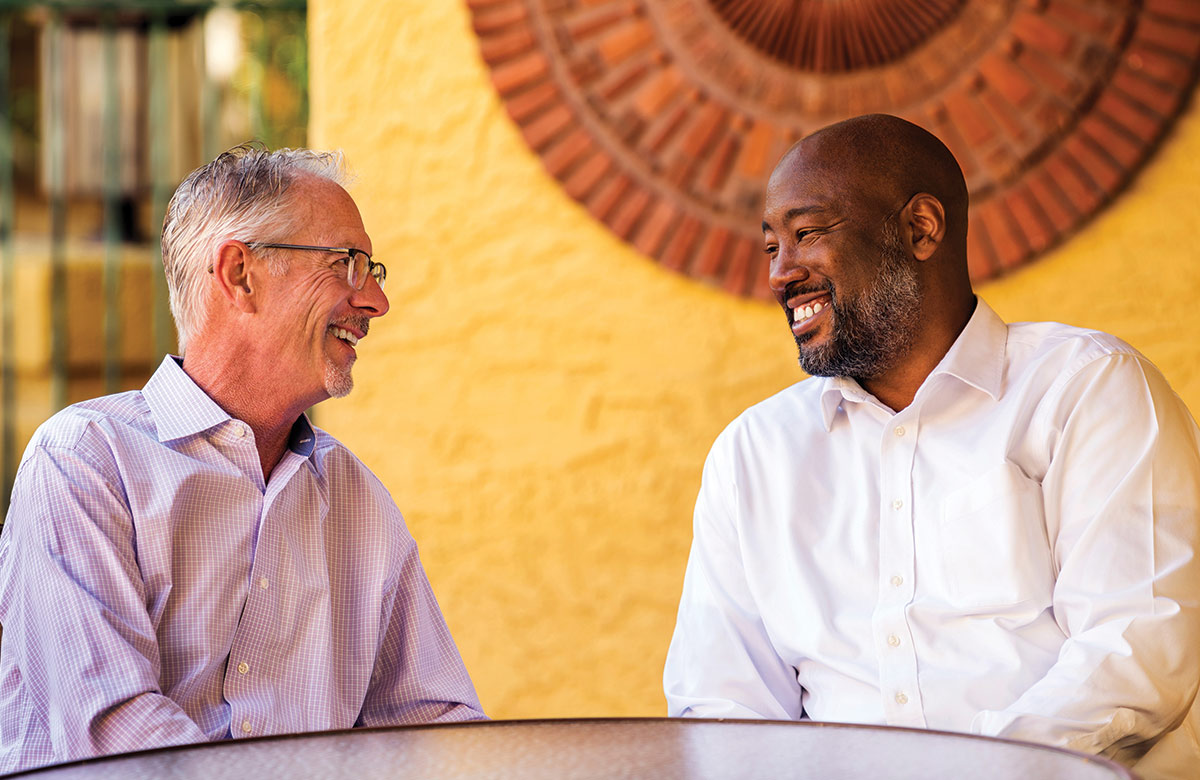ommercial real estate broker Murphy Cheatham (MRED ’07) remembers in vivid detail the conference he attended years ago at a posh Paradise Valley, Arizona, resort when he was a master’s degree student at W. P. Carey. When he glanced around the room, he came face-to-face with a stark reality about his chosen career.
“I remember looking up and it kind of put me in a weird place,” Cheatham says. “You’d think, ‘There have to be people of color here?’ But the only Black people in the room besides me were the servers.”
That wouldn’t be the last time Cheatham found himself in that situation since he jumped into the white-dominated real estate industry, working on development deals across Arizona, Louisiana, Tennessee, and Texas. An imposing figure at 6 foot, 6 inches, he says he has learned to overcome the subtle yet unmistakable discrimination that still looms large.
Cheatham, who grew up in Oakland, California, says his interest in the real estate business started as a seventh-grader when he quizzed his father about the reasons behind where projects were located during a drive to a Golden State Warriors basketball game. He studied accounting at Grambling State University (GSU), a historically Black university in Louisiana where his parents met. Cheatham graduated in 2001, with a long list of campus activities and a paid internship at State Farm Insurance under his belt, then moved to Arizona to work at Motorola.
He began his development career as a cost accountant for KB Homes, then at MODUS Development developing LEED-certified homes in the Biltmore area in central Phoenix. He also earned his real estate license and worked as a loan officer at a bank.
While volunteering at the Urban Land Institute, Cheatham heard about ASU’s new Master of Real Estate Development (MRED) program and was accepted into the inaugural class. That’s where he struck up a mentoring relationship with Mark Stapp, then an advisory board member and now the program’s executive director.
The two kept in touch as Cheatham worked his way through an industry that was less than diverse, and they reasoned that something could be done to address the glaring lack of diversity in real estate. In 2019, Cheatham was added to the GSU Board of Trustees, which gave him the impetus to achieve his goal.
In March 2019, Cheatham and Stapp shared their frustrations about the lack of diversity and opportunity within the industry. The conversations gave rise to ASU’s business school and Grambling forming a partnership that would enable students at GSU to join real estate development courses through ASU Sync, live-hosted digital classes. Cheatham, a Grambling foundation board member, helped secure the approvals at his alma mater, with Stapp working the ASU end.

“We thought that maybe this would be the path to get more people of color into the business,” says Stapp, the school’s Fred E. Taylor Professor in Real Estate. “My bigger objective was not just to offer a few classes, but to create a pathway into the master’s program.”
Now 14 years have passed since Cheatham graduated from ASU’s MRED program, and he advises real estate owners and investors on their assets as the managing broker of his business MDC Commercial Group in Dallas.
“Murphy has access to the business and, more importantly, ownership, which is so important for self-determination and inter-generational wealth transfer,” says Stapp who’s now known Cheatham for 15 years. “We’re still discovering how much inclusion is needed, and that is what we hope to improve.”
Cheatham says he hopes the effort will help even the playing field for entry into real estate for Black people, offering future generations never-before-seen opportunities.
Learn more about the partnership between W. P. Carey and Grambling State University to offer real estate courses to eligible GSU students: wpcarey.asu.edu/grambling
